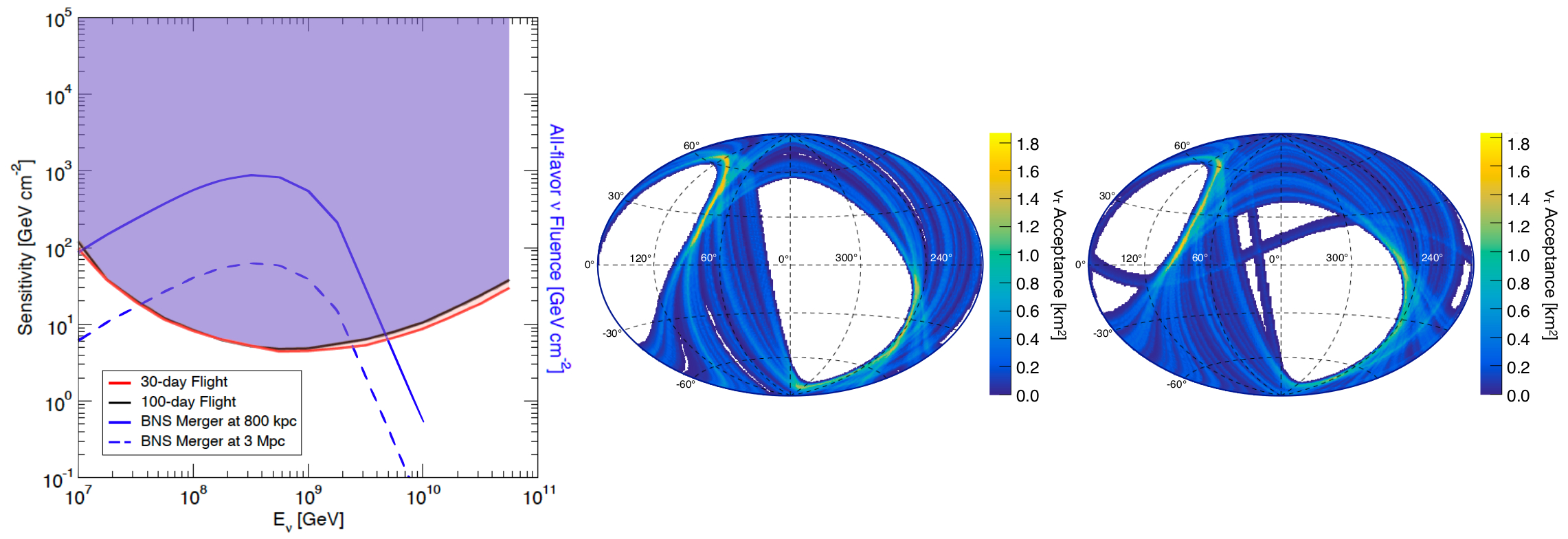
|
EUSO-SPB2
|

|
| Who is Who in the Collaboration | EUSO SPB1 | Cosmic Ray Physics | Neutrino Physics | New Physics Searches | Timeline Publications |
|
Almost all models of ultra-high-energy cosmic ray (UHECR) production
predict very high-energy neutrinos as a result of the decay of
charged pions generated in interactions of UHECRs within the
sources. EUSO-SPB2 will be able to characterize the background for
upward going showers initiated by the decay of tau leptons which are
expected to be produced by Earth-skimming tau neutrinos. The shower
particles emit Cherenkov light, which will be detected by EUSO-SPB2
and will be used to reconstruct the energy and incoming direction of
the tau neutrino. One
possibility for EUSO-SPB2 to observe neutrino signals (rather than
the background for upward going showers) is to point the
instrument in the direction of a transient astrophysical event
(e.g. binary neutron star mergers after receiving an alert). The
EUSO-SPB2 sensitivity to such events, called "target of opportunity"
(ToO) events
[arXiv:1906.07209], is shown in the figures below. |

|
|
| The Cherenkov Telescope (CT) is optimized for detecting the Cherenkov signals from EAS generated either above the Earth's limb by cosmic rays or below the limb by tau-neutrinos that interact as they cross the Earth. The threshold energy for detection for both the cosmic rays and the neutrinos is just below 1 PeV. The CT design is based on a Schmidt reflector with 4 mirror segments and a field of view of 6.4 degrees in zenith and 12.8 degrees in azimuth. To accommodate the very fast signals of the Cherenkov emission, the novel camera is composed of 512 Silicon Photomultipliers (SiPMs) pixels with a 10 ns integration time and a spectral range between 250 nm and 800 nm. The CT mirror segments are aligned in such a way that a parallel light pulse from outside the telescope produces two spots in the camera. This bi-focal alignment is used to distinguish triggers of interest from single spot events caused by low energy cosmic rays striking the SiPM camera directly. A detailed description of the CT is given in arXiv:2109.01789. |